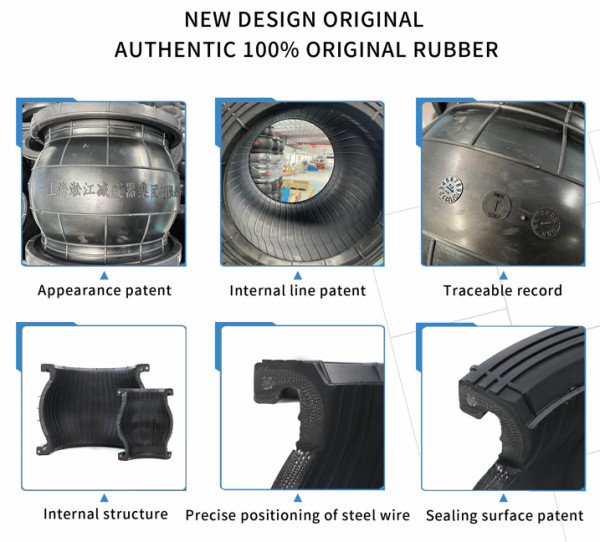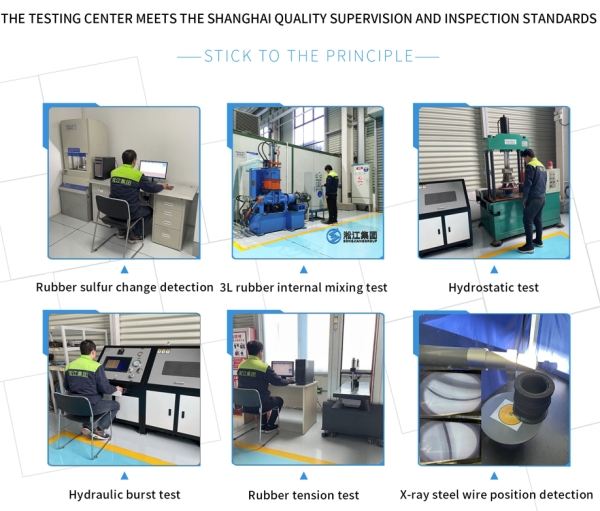Clamp-Type Silicone Rubber Flexible Connection for Lithium Battery Production Workshop
The official website of Shanghai Songjiang Shock Absorber Group Co., Ltd. introduces information about the use of clamp-type silicone rubber flexible connections in lithium battery production workshops. Songjiang Group customizes silicone rubber flexible connections in various specifications for customers, with customizable parameters such as caliber, thickness, length, and corrugations according to customer requirements, capable of withstanding high temperatures up to 150 degrees Celsius.
![]()
![]()
![]()
![]()
![]()
Name: Clamp-Type Silicone Rubber Flexible Connection
Model: KKT
Caliber: Customizable according to customer needs (Customization period: 7-10 days)
Length: Customizable according to customer needs (Customization period: 7-10 days)
Pressure Resistance: Less than 1kg
Applicable Media: Air, non-corrosive substances, water, powders, food-grade.
Material: Silicone Rubber (SI)
Silicone rubber consists of a main chain alternating silicon and oxygen atoms, typically with two organic groups attached to silicon atoms. Ordinary silicone rubber mainly comprises silicone-oxygen chain segments with methyl and a small amount of ethylene groups. The introduction of phenyl groups enhances high and low-temperature resistance, while trifluoropropyl and cyanide groups improve temperature and oil resistance. Silicone rubber exhibits excellent low-temperature resistance, generally working at -55°C. With the introduction of phenyl groups, it can operate at as low as -73°C. Silicone rubber also has outstanding heat resistance, working long-term at 180°C, maintaining elasticity for several weeks or longer at slightly above 200°C, and withstanding temperatures over 300°C for short durations. Silicone rubber has good breathability, with the highest oxygen permeability among synthetic polymers. Additionally, it possesses physiological inertness and does not induce blood clotting, making it widely used in the medical field.
Silicone rubber is divided into heat-cured types (high-temperature vulcanization silicone rubber, HTV) and room-temperature types (room-temperature vulcanization silicone rubber, RTV), with RTV further classified into condensation reaction type and addition reaction type. High-temperature silicone rubber is mainly used to manufacture various silicone rubber products, while room-temperature silicone rubber is primarily used as an adhesive, potting material, or mold. The most commonly used is methyl vinyl silicone rubber (VMQ), with other types including methyl silicone rubber (MQ), methyl vinyl phenyl silicone rubber (PVMQ, resistant to low temperatures and radiation), and others like liquid silicone rubber and fluorosilicone rubber.
Introduction to Lithium Batteries:
Lithium batteries are a type of battery that uses lithium metal or lithium alloy as the positive/negative electrode material and a non-aqueous electrolyte solution. The concept of lithium metal batteries was first proposed and researched by Gilbert N. Lewis in 1912. In the 1970s, M. S. Whittingham proposed and began researching lithium-ion batteries. Due to the highly reactive nature of lithium metal, its processing, storage, and use impose stringent environmental requirements. With technological advancements, lithium batteries have become mainstream.
Lithium batteries can be broadly classified into two types: lithium metal batteries and lithium-ion batteries. Lithium-ion batteries do not contain metallic lithium and are rechargeable. The fifth-generation rechargeable lithium metal battery was introduced in 1996, offering superior safety, specific capacity, self-discharge rate, and performance-to-price ratio compared to lithium-ion batteries. Due to the high technological requirements, only a few companies in select countries produce this type of lithium metal battery.
Introduction by Shanghai Songjiang Group:





Related link:Clamp Rubber Expansion Joint










